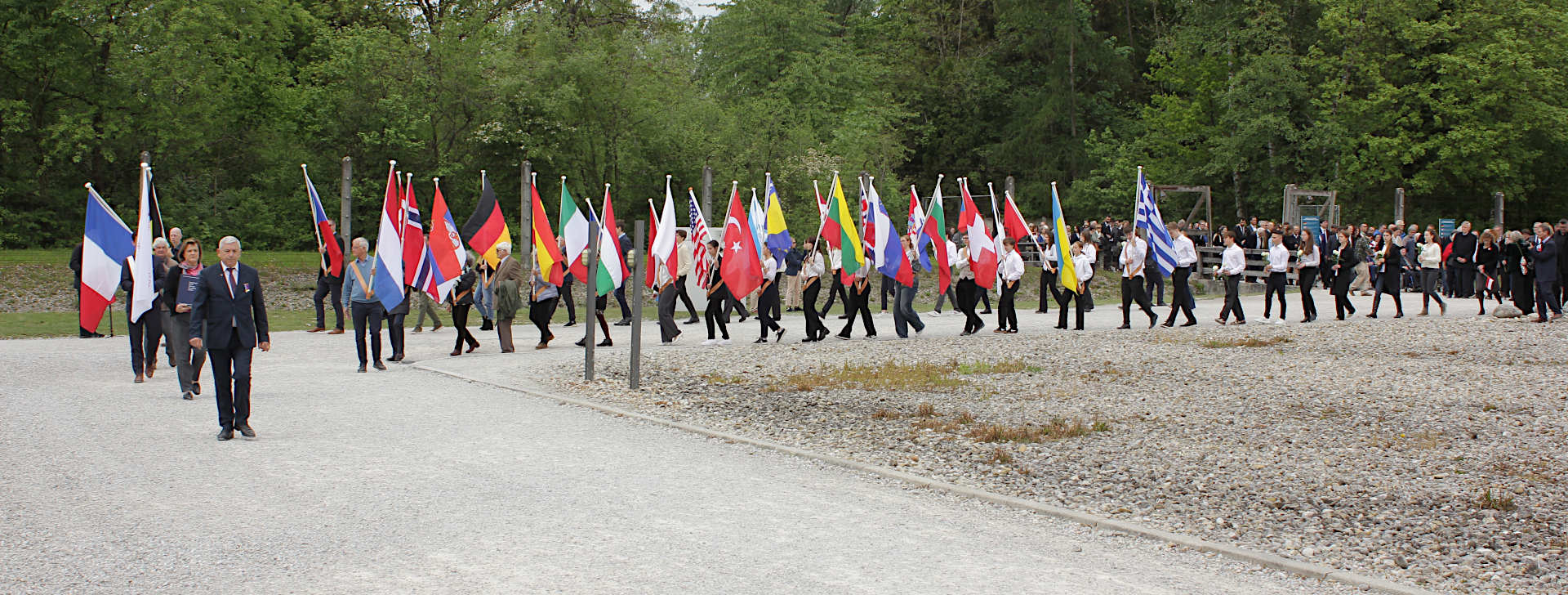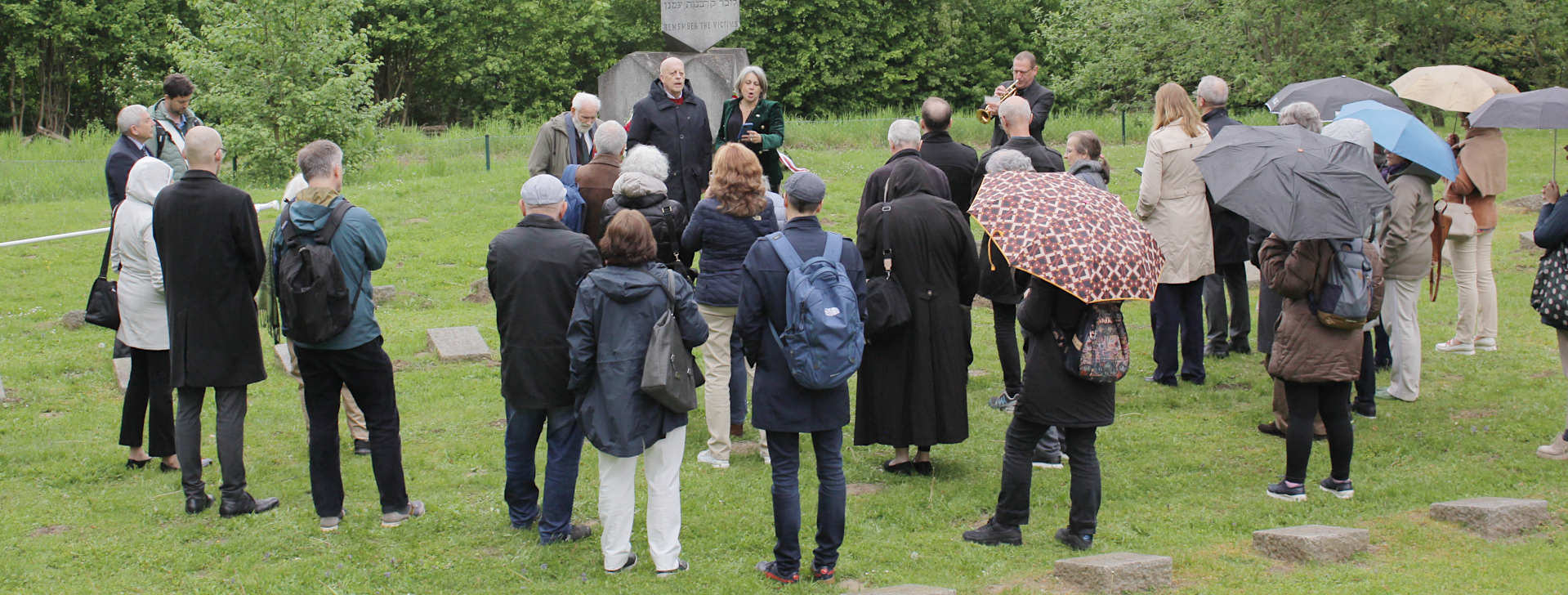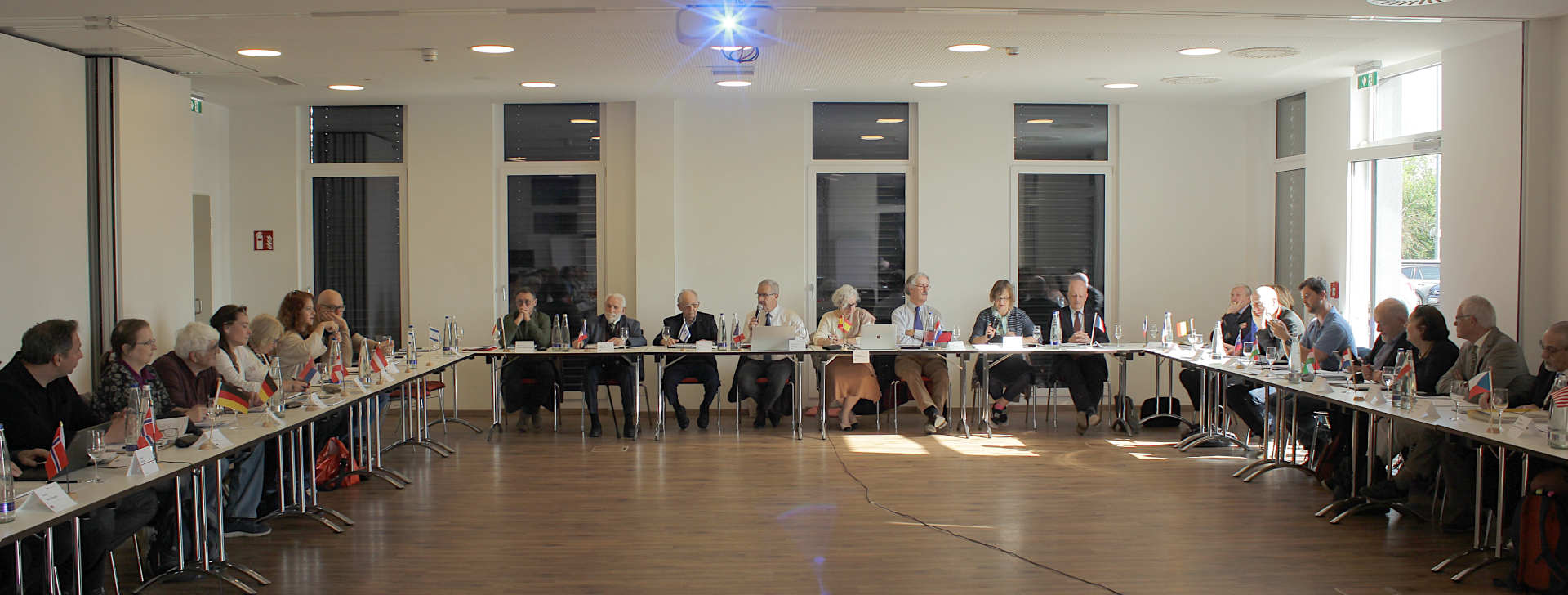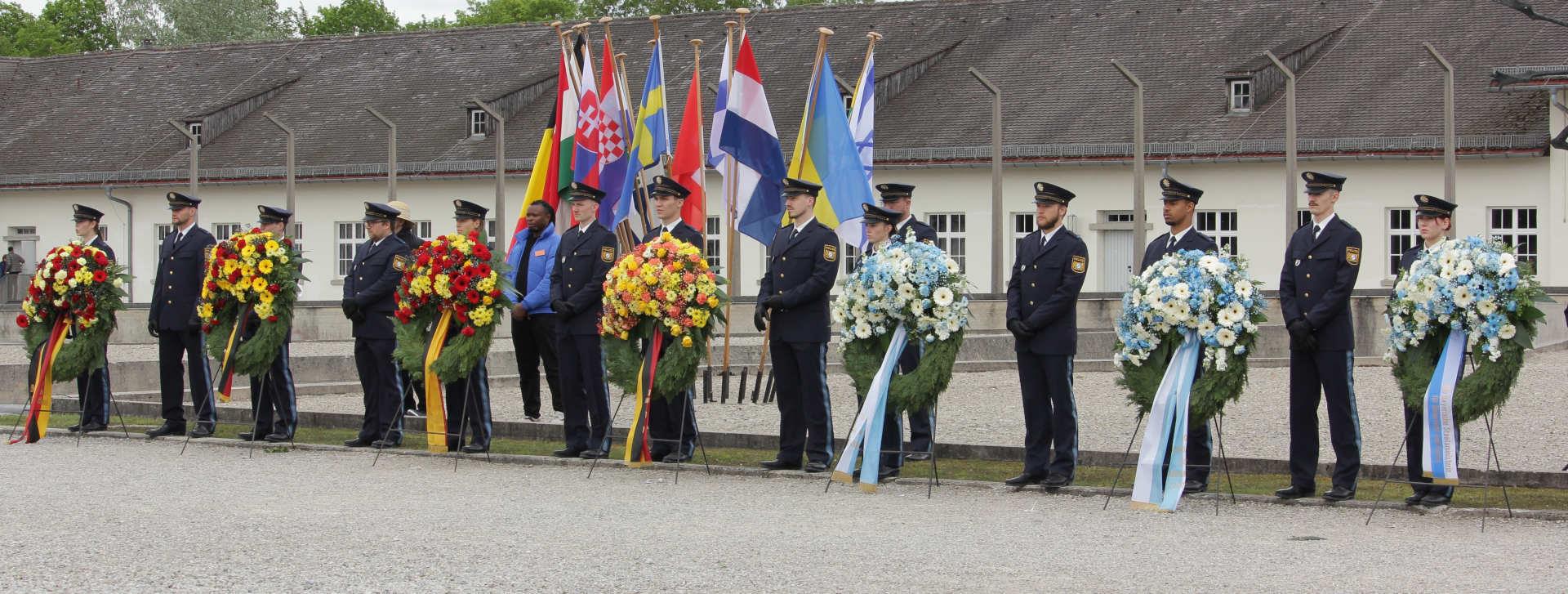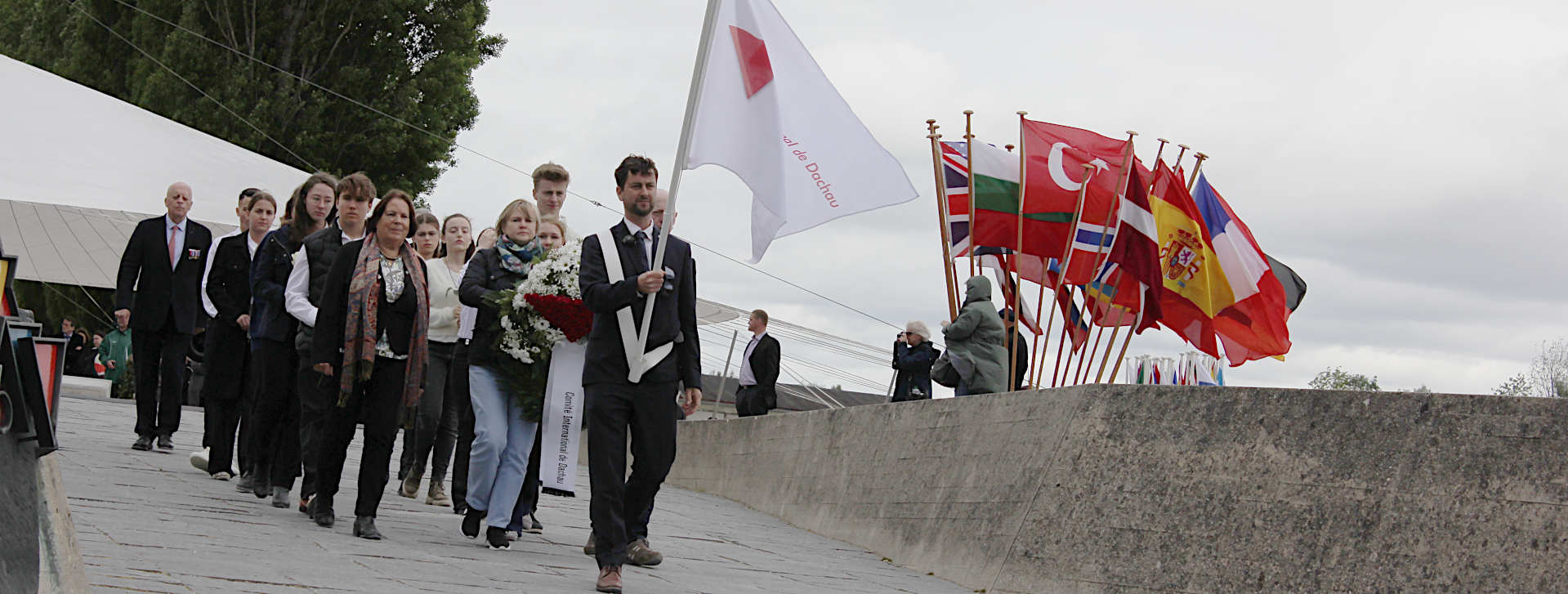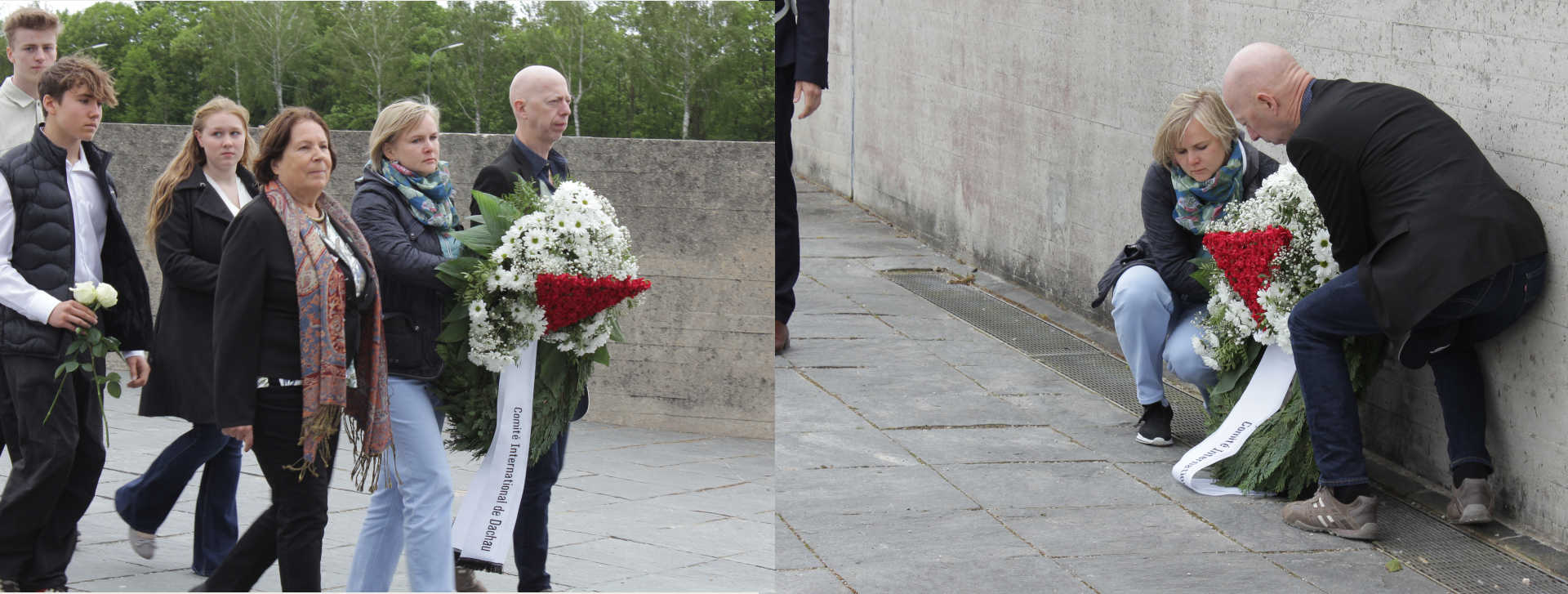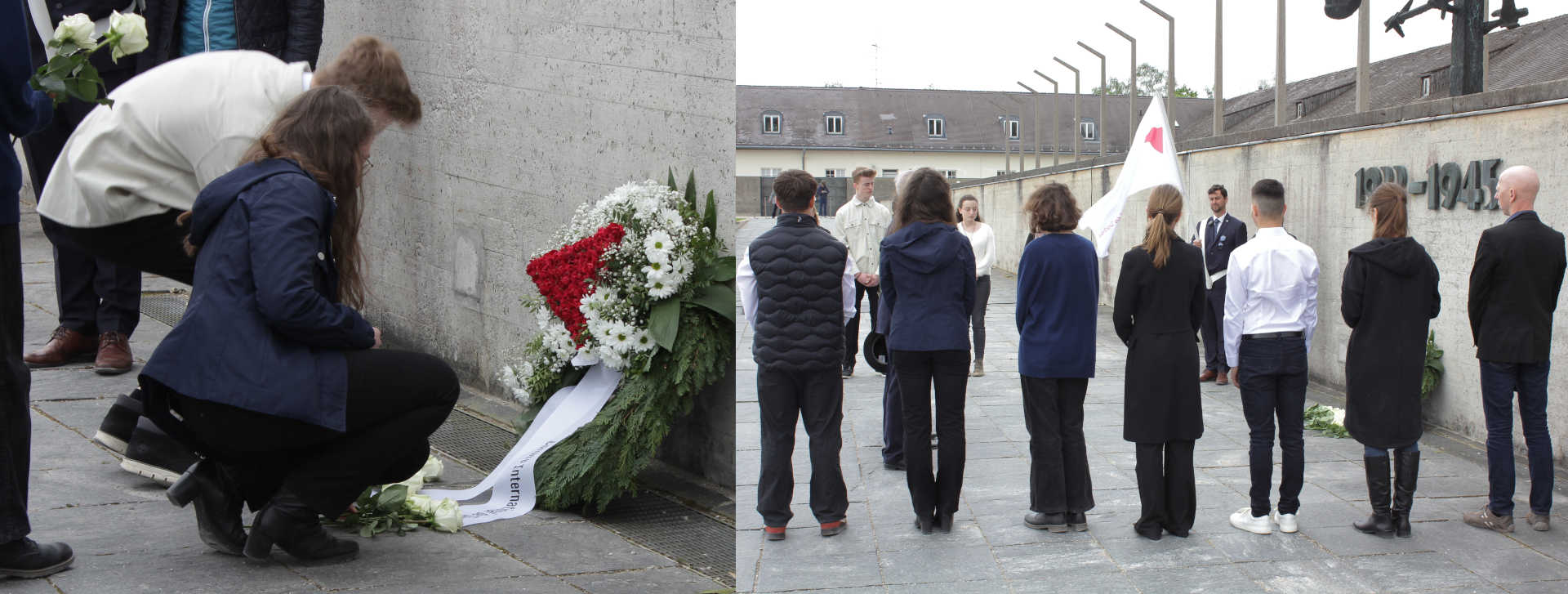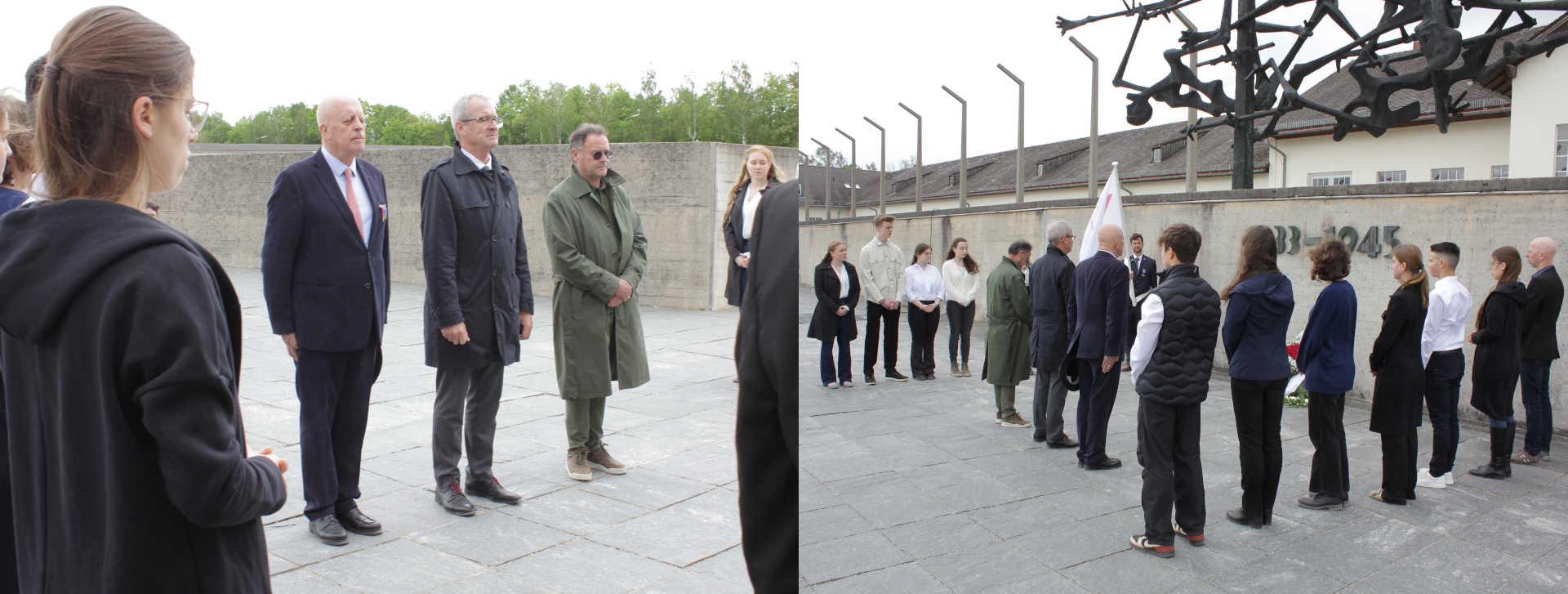Speech by the president of the CID on 4 May 2025
"Preparing for the future is what we are all doing here, public authorities, memorial staff and remembrance associations from all over the world, based on the values bequeathed to us by the survivors. We take care to look at the past objectively, but without concession, and we treat it as a field of experience whose analysis is necessary to find the right paths for the future. Finally, we share this knowledge with the younger generations in the most appropriate way possible, guided by the notion of ‘Never Again’."
On the occasion of the 80th anniversary of the liberation of the Dachau camp, the International Dachau Committee is delighted to welcome you, together with the Director of the Bavarian Memorial Foundation, Mr Karl Freller, and the Director of the Dachau Memorial, Ms Gabriele Hammermann.
You have come in great numbers. Among you are many descendants of victims and survivors from many countries. Above all, we are honoured by the presence of surviving deportees and liberators, accompanied by their families. We are also delighted by the presence of descendants of liberators and American servicemen, alongside representatives of the 42nd and 45th US Divisions, both serving and retired.
In April 1945, the combined efforts of these units made it possible to liberate the area around the town of Dachau and finally the Dachau camp. Previously, as the fighting and incessant bombardment in the vicinity approached, rumours were rife in the camp that liberation was imminent, or on the contrary, some feared that the camp would be evacuated for some ill-fated destination.
It was against this background that the first International Prisoners‘ Committee was set up, under the leadership of Patrick O'LERAY, with the most able-bodied prisoners, to organise the prisoners’ security against the SS guards until the camp was liberated, in case the latter tried to evacuate the camp or liquidate the deportees.
On 30 April, in the camp that had finally been liberated, the best possible agreement was reached between the Committee and the American command to provide the first emergency care for the detainees and to ensure the best possible conditions for their repatriation to their country of origin. Many would die in the days that followed, such was their physical condition. On 8 May 1945, Arthur Haulot took over from Patrick O'LERAY, who had to leave for London. By the end of June 1945, the camp was practically evacuated.
We are extremely fortunate to be able to bring together the descendants of all these people today. A moment ago, Arthur Haulot's little thread preceded the procession with the book of the 40,000 dead in Dachau and its outer camps.
As a result of the CID's lobbying of the Federal Government, the site of the camp, which was in danger of being abandoned, was given the status of a memorial in 1965. Under the supervision of the State of Bavaria, the Memorial has progressed through several stages to reach the scale and success it is known for, with its one million visitors from all nations every year.
In 2003, the Bavarian Remembrance Foundation was created, whose work has proved decisive in the Remembrance policy open to all, for the Dachau Memorial and the Flossenburg Memorial, and which is gradually being extended to the remains of the Kommandos.
If I take the liberty of this historical reminder, it is to underline the commitment and the relentless struggle of all those involved, gathered here today, in the work of remembrance of the greatest tragedy of humanity, caused by the supremacy of the ideals of National Socialism.
We must also pay tribute to the efforts of all the teams who have worked to organise this gathering, with its many concerns but managed with the utmost care. In the same way as General André Delpech did on the occasion of the 50th anniversary, the International Committee for Dachau expresses its gratitude to the Foundation, the Memorial and all their teams for all this investment, past and present, in the name of Freedom and Human Dignity.
Our ambitions don't stop there, as a major project to transform this memorial is already taking shape for the coming years. It is ambitious and necessary, and we have high hopes and expectations for it. This project bears witness to everyone's perseverance in favour of Remembrance, and will be a first-rate educational tool for future generations.
This project is also an essential response to the negationist currents of thought that are increasingly revisiting history, or that sometimes invite us to dwell a little less on the past, and to focus only on the future, which we may fear could take on different outlines.
Preparing for the future is what we are all doing here, public authorities, memorial staff and remembrance associations from all over the world, based on the values bequeathed to us by the survivors. We take care to look at the past objectively, but without concession, and we treat it as a field of experience whose analysis is necessary to find the right paths for the future. Finally, we share this knowledge with the younger generations in the most appropriate way possible, guided by the notion of ‘Never Again’.
In the minds of the surviving deportees, and they will say it better than I can in a moment, NEVER AGAIN is not limited, as we might be tempted to think, to ‘Never again concentration camp, never again extermination camp, never again genocide’.
If we refer to the oath taken by the former deportees of Dachau on the Leinteinberg hill on 29 April 1955, ‘NEVER AGAIN’ also means, and in the text, ‘never again will a people be attacked and enslaved’, it also means the will to ‘bring peoples together in peace with a view to ensuring their security, independence and freedom’.
In this way, the oath is a tremendous impetus for a united Europe and a free world.
Since 1945, however, there has been a succession of wars on varying scales, alternating between periods of tension and periods of happy or relative peace. In the end, you might think that the red line of NEVER AGAIN has been drawn at the highest level, thereby authorising all the misdeeds below it, which are currently reaching their climax: the return of the major geopolitical blocs with territorial and economic ambitions, the violation of borders, manipulation and disinformation of populations, xenophobia, anti-Semitism, obscurantism, social violence and the testing of our democracies. In a way, it is the return of all the threats and all the evils, but one front is seeking unity and is striving to resist.
If we are gathered here today, it is to recall the true red line set by the surviving deportees: that of everyday actions, that of basic rights, and therefore that of everyone's duties, all supported by a true humanist vision of solidarity and virtue.
To cross this red line, at its most basic level, is to overshadow the memory of all the victims of this camp and its kommandos, and to overshadow the memory of the fighters who gave their lives for our freedom.
This year, the wreath-laying tribute that we will be observing in a few minutes' time invites you, in a new and symbolic way, to gather as a united front and to rediscover the true meaning of the inscription “Never Again” that stands before us.
Thank you for your attention




